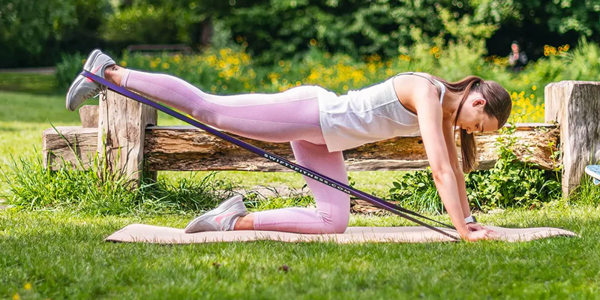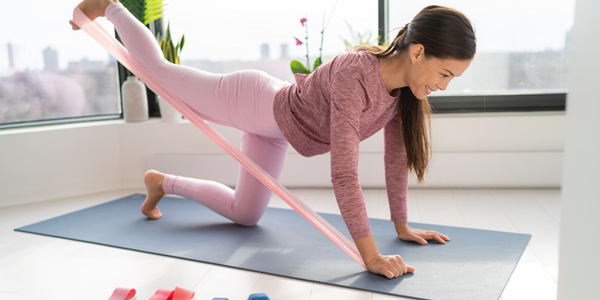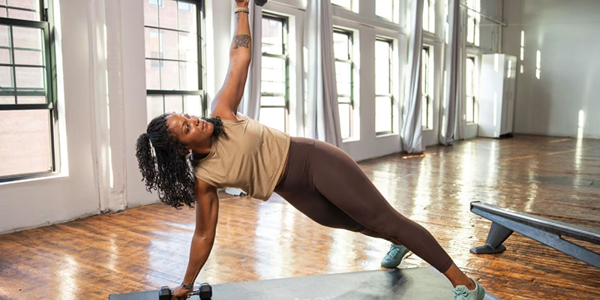How To Use Resistance Bands Effectively
Resistance bands are strategic tools for working out. They are easily carried, budget-friendly, and have varying levels of use. They act as a new alternative to weights and can improve strength, flexibility, and stamina. So, how can one use these bands optimally? Let's discuss their effectiveness.
What Are Resistance Bands
These bands vary in form, ranging from circles to flat sheets. Each type of resistance band has its specific use. These bands supplement tension throughout the activity, which dumbbells or barbells cannot provide. This consistent strain makes muscles grow more efficiently than free weights.

The need for space to work out with resistance bands is almost nonexistent, making them easy to use at home or while travelling. Furthermore, as bands cater to all fitness levels, from beginners to advanced athletes, one can modify the band's usage by combining multiple bands to customize the resistance levels.
Most Important Advantages Of Resistance Bands
Before we discuss the tips and techniques, let's consider the advantages of resistance bands. The information below will help you understand further.
Flexibility
Flexibility is one crucial benefit that stands out above the rest. You can do various exercises targeting the upper body, lower body, and core, each with its band-related exercise. For example, for glutes, you can use band squats or hip thrusts; for shoulders, try out lateral band raises or band face pulls.
Enhanced Balance And Stability
Unlike machines, free weights and resistance bands offer no stabilization assistance during use. These bands require you to stabilize your body during movement, which provides an additional layer of difficulty. This results in a workout of smaller stabilizing muscles, which improves balance and coordination. Consider standing bicep curls using a resistance band instead of dumbbells while sitting. It means engaging your core and legs the entire time.
Gentle On The Joints
Like other exercise equipment, resistance bands can eliminate undue tension on joint surfaces and enable the arm muscles to relax. When lifting heavy weights, the tension of the muscle bands allows for a transition between movements.
Tips And Techniques For Correct Usage
We know that resistance bands offer many benefits. Now, let's focus on using them correctly.
A Sturdy Resistance Band Handle Helps
Like every other exercise, proper form is essential for injury prevention and injuries. Always make sure that your stance is set before moving. If you are doing seated rows, sit upright and place your back on a wall while your shoulders are relaxed and engaged. Keep the knees aligned with the toes during leg exercises to avoid Stress.
Getting Stronger Through Muscle Overloading
As you progress, it becomes essential to overload your muscles to improve further. With resistance bands, this means switching to tighter bands (more resistance) or using two bands for more pull. Another point to remember is that new equipment is not always needed; changing angles or leverage points can also increase difficulty.
Using Compound Movements Strategies
These include deadlifts, thrusters, and pull-apart, all very quickly and effectively done with wide-grip resistance bands. These compound movements involve more than one joint working simultaneously, building functional strength and burning more calories. Incorporating these forms with isolation movements will result in a more effective exercise program.
The Advantages And Limitations Of Resistance Bands
Like any other fitness equipment, Resistance bands have their advantages and disadvantages. Here is what sets resistance bands apart from the more common options available:
Dumbbells
Unlike dumb retarders, bands have an advantage in the range of motion, as they can build strength without additional weights. Both tools can provide resistance to participants; however, the effectiveness of building strength using dumbbells will depend on the user's familiarity with weight lifting and the position being held. Dumbbells win regarding travelling and storage because of their lightweight, compact structure.

Barbells
These are typically used in bodybuilding and powerlifting competitions because they allow heavier ranges, rep and set value targets. Resistance bands are far superior for muscle endurance or rehabilitation exercises as they offer controlled resistance in a full range of motion.
Machines
Exercise machines are bulky, so they only target specific areas of the body, requiring continuous attention for the offered benefits to take effect. But with resistance bands, all muscles are activated, making them far superior as stabilizers do not need to be held on to. Not only that, but they also barely take up any space, unlike machines, which makes them an ideal choice for people with tight spacing.
Helpful Hacks For Novices
For people new to working, resistance bands can be daunting to work with if you are unaware of how to use them. Ease into them using these tips:
Lighter bands should be used to get accustomed to the new tools, so feel free to test out the different types of bands available.
Ensure you check tutorial videos that can be accessed online to learn the correct form of various exercises.
Ensure you note down the band, sets, resistance, and reps you are doing to keep track of progress.
Precautions
Of course, many benefits can be reaped; however, severe injuries can occur if resistance bands are poorly used. Injuries can be avoided by:
Do not overstretch any bands that are not meant to be stretched that much, and keep an eye on the bands at all times.
Securely fasten bands to avoid potential injury.
Ensure you ease into the activity and make time for muscle preparation.
How To Obtain Assistance During Fitness Activities
If you want to improve your physical fitness, do not panic because it is not overly complicated. Instructional videos, community forums, and personal trainers that focus on resistance band exercises can help you work towards success. Remember, achieving long-term benefits requires consistency and wise decision-making.
To put it concisely, resistance bands are a modern tool for advanced fitness enthusiasts who wish to save time, achieve the most results with minimum effort, and, most importantly, enjoy their workouts. Use this handy item to help you achieve your fitness goals!




